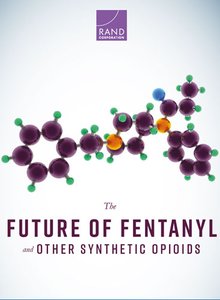The future of fentanyl and other synthetic opioids
The future of fentanyl and other synthetic opioids
RAND Corporation, Santa Monica, Calif. (2019)


The number of opioid-related deaths in the United States is truly astounding. There were on the order of 50,000 opioid-involved overdose fatalities in 2018, which is roughly similar to the magnitude of deaths from HIV/AIDS at its peak in 1995 (Centers for Disease Control and Prevention, 2013; Ruhm, 2018; Ahmad et al., 2019). The rates of overdose fatalities involving heroin or other semisynthetic or natural opioids (which are mostly prescription drugs; see Appendix A for terms) have slowed in recent years and are now outnumbered two to one by overdoses involving synthetic opioids. Ciccarone (2017, p. 107) refers to a “triple wave epidemic:” The first wave was prescription opioids, the second wave was heroin, and the third—and ongoing—wave is synthetic opioids.
There are many different synthetic opioids, but analyses of death certificate records show that most synthetic opioid overdoses as of 2016 involve fentanyl (Hedegaard et al., 2018; Spencer et al., 2019). Similarly, drug seizure databases indicate a sharp rise in the number of exhibits containing fentanyl, from slightly fewer than 1,000 in 2013 to more than 59,000 in 2017 (U.S. Drug Enforcement Administration, 2018e), although some of that increase might be a function of greater law enforcement efforts aimed at detecting and seizing fentanyl and other synthetic opioids.


